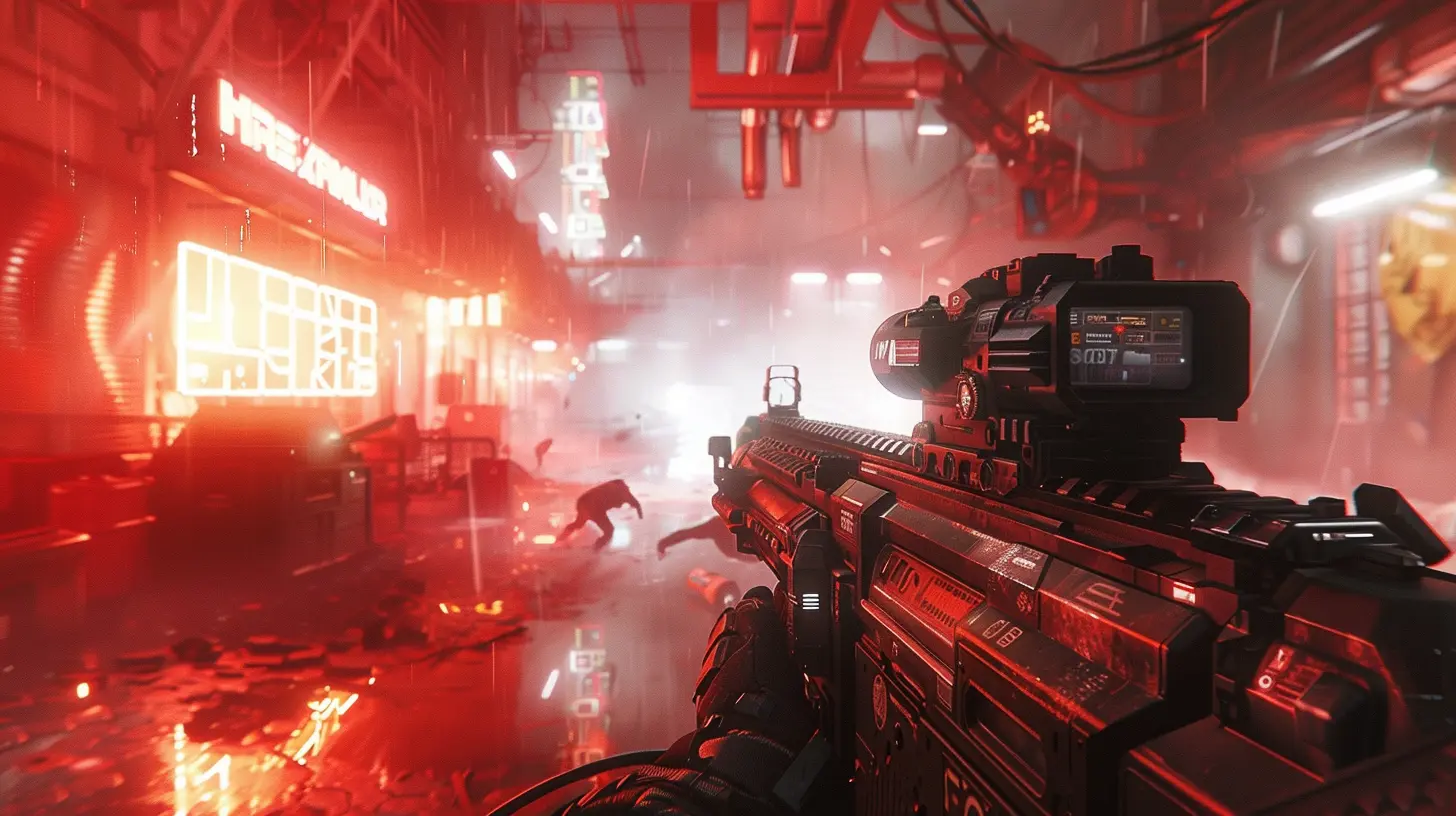How Cross-Platform Play is Shaping the Future of FPS Games
30 September 2025
Remember the days when you and your buddies had to buy the same console just to play together? Gone are those frustrating times. Cross-platform play is revolutionizing the way we experience first-person shooters (FPS), changing not just how we game—but who we game with.
In the fast-paced, trigger-happy world of FPS games, the concept of cross-platform play isn’t just a feature anymore—it’s a movement. It’s breaking down walls and reshaping the landscape of competitive and cooperative gaming. So, what’s the big deal? Why is everyone talking about it and why are developers scrambling to make it a staple?
Let’s dive in.
What is Cross-Platform Play, Anyway?
Alright, let’s get the basics out of the way.Cross-platform play (or crossplay) means gamers on different hardware—PlayStation, Xbox, PC, Nintendo Switch, even mobile—can all squad up or face off in the same online matches. You’ve got a PS5? Cool. Your buddy’s still rocking an old Xbox One? No problem. Want to jump on your PC and smoke some console players? Have at it.
It’s like tearing down the walls of your digital neighborhood so everyone can hang out in one massive, open yard.
The Crossplay Revolution: Why FPS Gamers Love It
Now, you might be thinking, "Okay, that’s neat. But how’s it actually changing the FPS scene?"Here’s how.
1. Bigger Player Pools = Faster Matchmaking
Before crossplay, finding a match during off-peak hours was like trying to find a pizza place open at 3 AM—possible, but painfully slow.With crossplay, you’re no longer limited to the folks on your platform. Suddenly, there’s a massive pool of players waiting to jump into the action. Matchmaking becomes snappier, and you spend more time playing and less time staring at a loading screen.
2. Say Goodbye to Console Wars
FPS games have long been the battleground for the “keyboard vs. controller” debate. But here’s the twist—crossplay actually bridges the gap rather than widens it.Sure, mouse and keyboard offer precise aiming, and controllers give that sweet aim assist. But crossplay isn’t about proving one method is superior. It’s about giving everyone a seat at the table.
Modern matchmaking systems even things out by grouping players according to input methods. So, if you’re on controller, you’ll mostly face others with the same setup—even if they’re on a different system.
3. Unified Gaming Communities
Remember when Call of Duty lobbies were split by platforms? That’s ancient history. Now, whether you're on PC, Xbox, or PlayStation, you’re part of the same digital battlefield.Crossplay unites friends and rivals. You don’t need to worry about buying the same console—or even playing on the same brand—to enjoy games together.
More friendships, less FOMO.
Real Talk: The Challenges of Cross-Platform FPS Gaming
Of course, not everything’s sunshine and headshots.There are a few issues developers (and players) are still ironing out.
1. Balance and Fairness
PC players often have higher frame rates and more precise controls. That means console players can sometimes feel like they’re bringing knives to a gunfight. To fix that, many games offer input-based matchmaking, optional crossplay toggles, or even nerf certain advantages.It’s a balancing act, and not everyone’s happy. But hey, no system is perfect.
2. Cheating Concerns
Let’s not ignore the elephant in the room—PC tends to have more cheaters. It’s just the nature of open systems.When crossplay brings console players into that ecosystem, it opens the door to frustration. Developers are tackling this with better anti-cheat systems, regular ban waves, and stricter reporting tools.
Still, it’s an ongoing war.
3. Technical Hurdles
Crossplay isn’t just flipping a switch. Developers have to deal with network differences, platform policies, and coordination nightmares between Sony, Microsoft, and others.Not every game can support crossplay from day one. Some never manage it. But the trend is changing as demand grows and tools improve.
How Big Titles Are Leading the Crossplay Charge
Let’s take a look at how some of the biggest names in the FPS world are handling crossplay.🎯 Call of Duty: Warzone
Warzone is practically the poster child for crossplay done right. Since launch, it’s supported play across PC and both major consoles.You can squad up with friends on any system, join cross-platform parties, and even go head-to-head in massive 150-player lobbies. It’s seamless, smooth, and sets the gold standard.
🔫 Apex Legends
Respawn’s battle royale shooter embraced crossplay in 2020, and it’s only gotten better since. While PC/console matchmaking is mostly separate, players can opt-in to crossplay and party up across platforms.It proved that with the right infrastructure, crossplay can thrive even in competitive shooters.
💥 Fortnite (Yes, it still counts)
Okay, technically not an FPS (it leans third-person), but Fortnite deserves mention. Epic Games made crossplay mainstream, and its success opened the floodgates for other titles.They even brought mobile into the mix before scaling things back. That kind of ambition paved the way for what we see in FPS games today.
Competitive FPS and Crossplay: A Match Made in Chaos
Things get spicy when you bring crossplay into ranked or eSports-style play.Pros and Cons for Competitive Players
On one hand, crossplay lets the best compete—regardless of platform. It creates more competition and more exposure.But on the flip side, balancing is tricky. Some regions ban crossplay in ranked modes. Others allow it only with strict matchmaking rules. Developers are still figuring it out.
Esports orgs? They mostly stick to PC for now, but even that might change as consoles become more and more powerful.
What This Means for the Future of FPS Games
So, where is all this heading? What does cross-platform play mean for the games we’ll see in 2024 and beyond?1. Platform-Agnostic FPS Titles
Future FPS games might not even mention consoles or PC anymore. They’ll launch as services—accessible on any device with an internet connection. Think of cloud gaming, like Xbox Cloud or NVIDIA GeForce Now.Crossplay will be the default, not the exception.
2. Cross-Progression: A Perfect Partner
Cross-platform features go beyond playing together. Cross-progression lets you take your stats, unlocks, and skins with you—no matter what system you’re using. Start on your PS5, switch to your gaming laptop later, and finish the weekend on your Xbox.That freedom is where gaming is headed.
3. Bigger, Better, and Bolder Communities
Crossplay encourages a larger, more inclusive gaming culture. That means more players, more creators, more content, and more epic moments to share.We’re not just breaking down walls; we’re building bridges—to bigger and better experiences.
Final Thoughts: Embrace the Chaos
Cross-platform play isn’t perfect. There are hiccups, imbalances, and skeptics. But just like the FPS genre thrives on fast action and dynamic change, so too does the gaming industry.As developers improve matchmaking, anti-cheat, and performance parity, crossplay will become a no-brainer, not a bullet point on a feature list.
FPS games are no longer limited by hardware. They’re about people, skills, and good old-fashioned trash talk—no matter what device you’re using to shout it.
So, whether you’re landing headshots with a mouse or pulling off sick noscopes on a controller, the future is clear: it’s all about playing together.
Now, grab your headset, text your friends, and jump into a match—because the next killstreak might just come from someone playing on a totally different system.
all images in this post were generated using AI tools
Category:
First Person ShooterAuthor:

Pascal Jennings
Discussion
rate this article
1 comments
Stella Maddox
Great article! Exciting to see how cross-platform play is evolving FPS games and bringing gamers together!
October 2, 2025 at 4:27 AM

Pascal Jennings
Thank you! I'm glad you enjoyed the article and share the excitement about the future of cross-platform play in FPS games!


